reSTART – a homage to the old bus garage that was once used for public transportation repairs but now turned into a new creative zone? An old industrial DEPO undoubtedly gets a new facade, both indoor and outdoor. The glass-walled hall that once served for heavy equipment repairs and as a bus garage has been given a new raison d’être in 2015. The DEPO on Cukrovarská Street was adapted for a new functional purpose and transformed into a modern urban art factory dedicated to creative projects such as DOMUS, the exhibition of design or Cestmir Suska’s exhibition of oversized rusty objects.
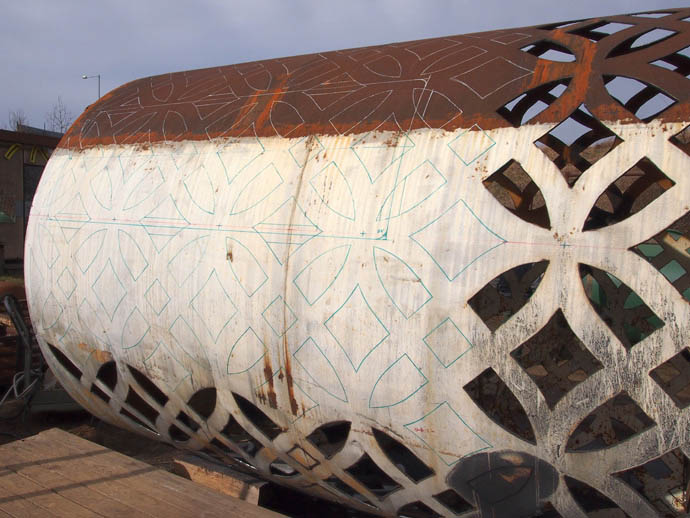 ,
,
The Czech renowned sculptor Cestmir Suska, a Prague-native, who worked and lived in the US, first in Utica, upstate New York, and then Vermont became something of a hit in the US. His oversized and geometrical sculptures have been showered with awards, amongst them a prestigious Pollock-Krasner scholarship. He is currently running a sculptor‘s studio Bubec in Prague-Reporyje, where he organises workshops and artists in residence pogrammes for young sculptors and artists as well as events called Art Safari. I met Cestmir Suska in Pilsen, the European Capital of Culture 2015, to talk about his latest work and the reSTART exhibition.
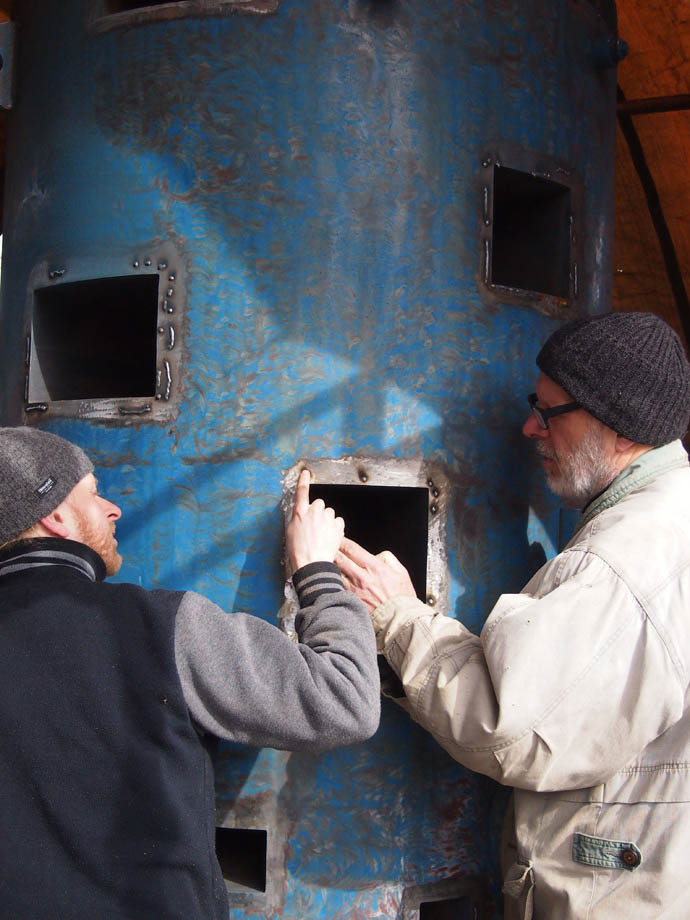
KALTBLUT: Your sculptures come either in glass, wood or metal. One thing that they have in common is their gigantic weight and size. How is the work with such different materials, especially heavy discarded metal?
Cestmir: Over the years, I underwent various periods and tested many materials. Each of them will allow you to do something else depending on its surface, structure and size. I am interested in using traditional materials as well as technological procedures while creating something that attracts the attention of people of today. Since 2005, I have been working with steel using old scrap industrial containers. I carve openings into them inspired by everyday things, such as tablecloths, carpets, curtains, wallpapers and so on, using oxyacetylene burner or plasma. While working in this way, I found out that the patterns that inspire me are identical with the invisible structures of matter. For example, I made a big sculpture modelled on an old Grandmother’s apron and then a friend of mine sent me a photo of the structure of a carbon nanotube. They were exactly the same.
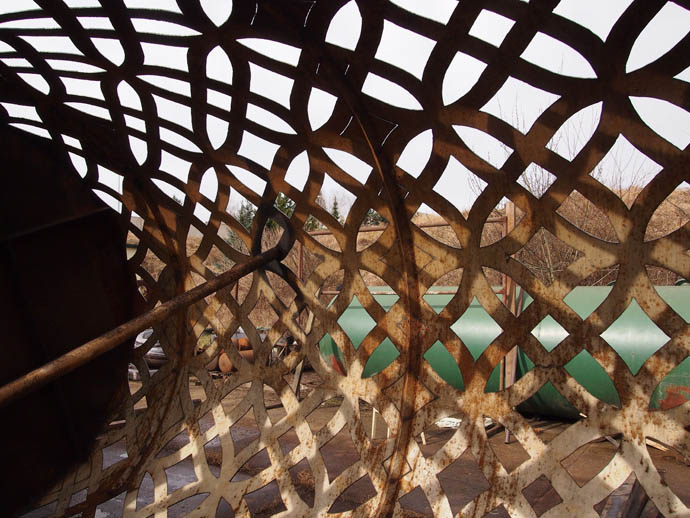
KALTBLUT: Where do you obtain the massive industrial metal?
Cestmir: In the world, there are a lot of things you do not notice at all until you need them. Once I discovered my first gas tank in the scrap yard in Vermont, USA, I found out that these vessels are lying around everywhere: not only in old factories, but also in fields, next to a railway line or in my neighbour’s garden. All you have to do is to take them away. And when people found out what I was making out of them, they themselves started to offer them to me. I do not even manage to bring them all.
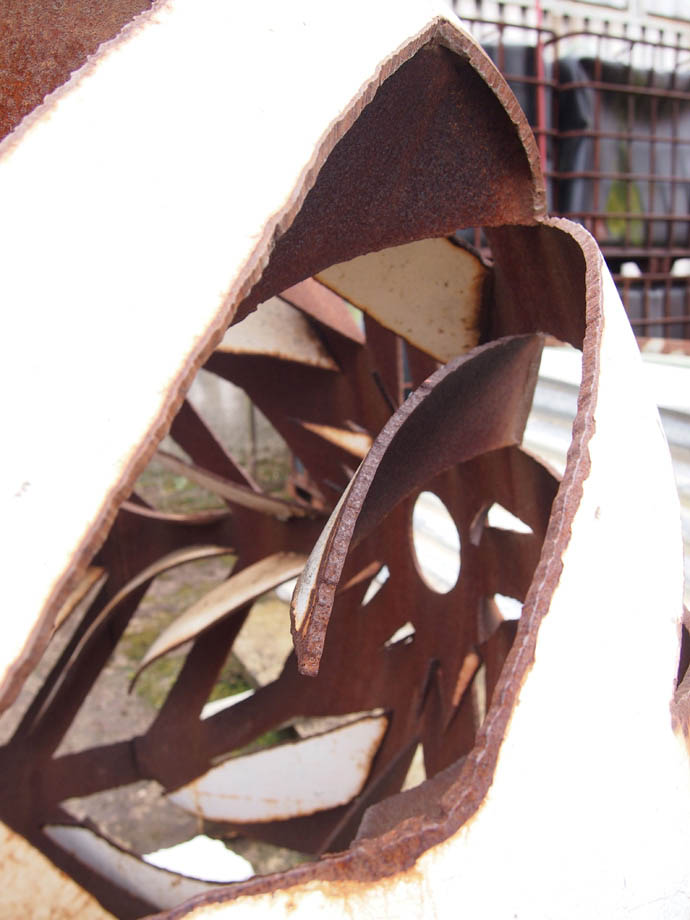
KALTBLUT: Your work is very popular in the United States. How would you compare the choice and the access to the raw industrial materials across the Atlantic and over here in Europe, in particular the Czech republic?
Cestmir: It is all pretty similar: it will occur to very few people on both sides of the Atlantic that I could make a sculpture that could arouse anybody’s admiration using an old filthy tank. Only in one Vermont town, I encountered a man who had a very nice vessel among a pile of junk and demanded an exorbitant price for it. His name was symptomatic: Mr. Ransome. However, there is one fundamental difference: American tanks have hemispherical ends whereas in Europe, these ends are flat, they are called bottoms. Because one of my favourite shapes is a sphere, I ask people in the US to send me semi-finished products, hemispheres, and then I put them together.
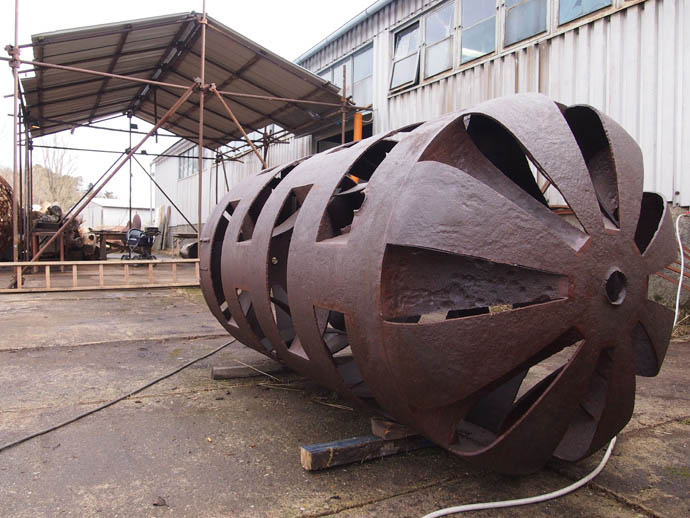
KALTBLUT: You revive decades old materials, in a way giving them a new life. What is the precondition for the material to be used for a sculpture? Rusty and old?
Cestmir: What is of most importance is the shape, it must interest me, and I have to adopt it as my own. Someone might think that it confines me but the opposite is true. I must only make sure that a serially produced form becomes an original. Some sculptures were created only so that I cut them up and welded back in a modified form. I am basically a crypto-conceptualist but it is not recognisable at first glance. As far as paint is concerned, initially I removed it from the surface of the vessels so that the steel surface became apparent. It was when there still remained some European perfectionism in me. But then I realised that even paint, together with those scratches, belongs to the vessel and that removing it is a nonsense. So I exhibit them raw, as they are when I find them.
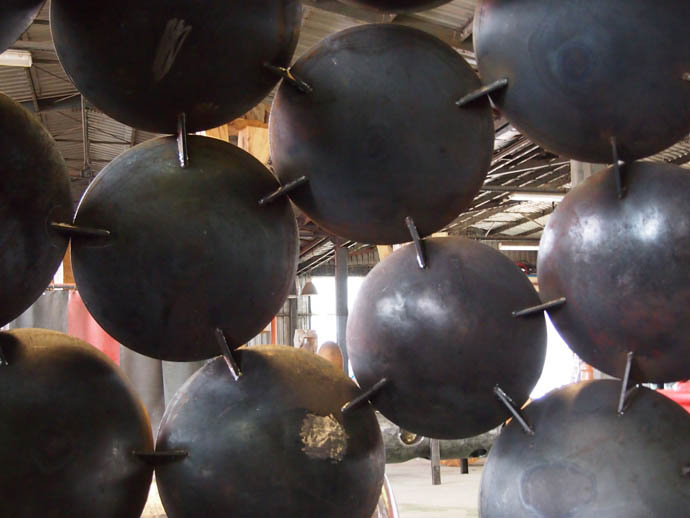
KALTBLUT: Where do you get your inspiration from?
Cestmir: As I told you, everywhere around me. In 2007, I arrived in Birmingham, Alabama, and got hold of very nice old gas tanks. I did not know what to do with them but my wife had pants with a floral motif which I carved into them. And, since floral motifs are very popular, the entire set of my works made of metal containers started to be called Rusty Flowers.
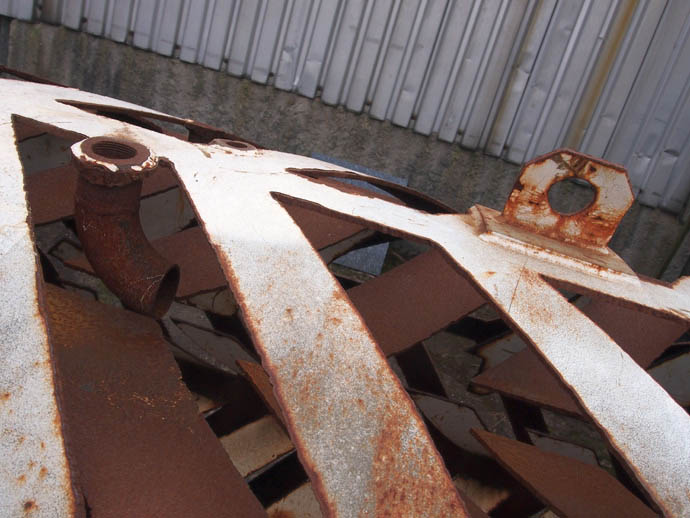
KALTBLUT: Is reSTART exhibition a homage to an old bus garage that is being given a new and fresh start as a creative zone DEPO? Or is it just a coincidence?
Cestmir: There is no such thing as a coincidence. When I saw DEPO’s courtyard for the first time, it looked very empty and deserted and it was necessary to awaken it. In a very short period of 3 months, I created new sculptures. They were created in my studio while I was managing production of a 15 m high tower in Mr. Kasper’s factory in Trutnov and a German company, Schody Stadler, produced stairs and viewing terraces for two smaller towers. These were manufactured in Hungary and assembled by a Czech company directly in DEPO. So it was an exemplary European cooperation.
KALTBLUT: What is RESTART about?
Cestmir: Restart is a reminder that we should never lose heart, we can always start again.
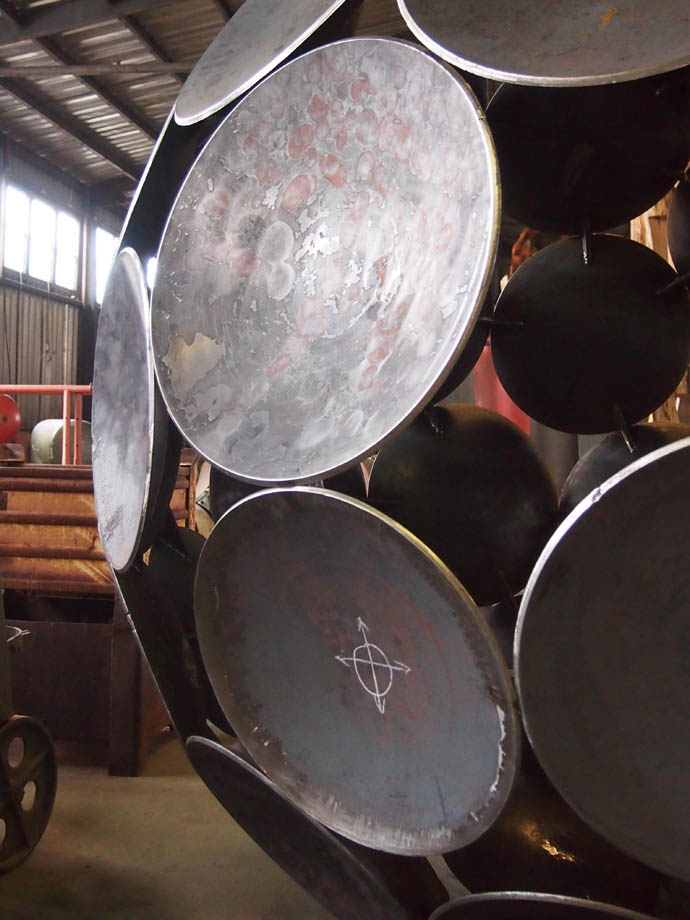
KALTBLUT: What exactly is project Art Safari? A park where only ‚rusty flowers‘ can grow?
Cestmir: Art Safari is a weekend art festival at the Bubec Studio in Řeporyje, Prague. I founded the Studio in 2000. It came into being in what formerly was a warehouse hall and, alongside artists from the Czech Republic, also those coming from abroad work in it. They arrive for residencies and you can see the results of their work exactly at Art Safari which we always organise in June and September. Currently, the Studio is under reconstruction and, with a team of collaborators, we are realising our vision of a large cultural and community centre to be completed in 2020.
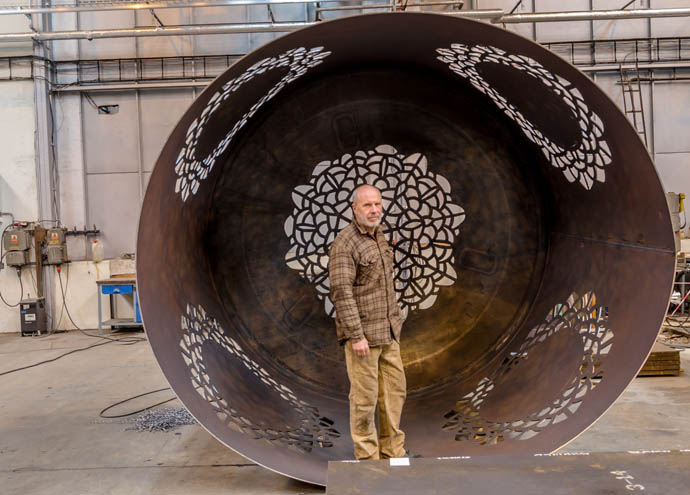
KALTBLUT: Is DEPO a place where you could imagine to come and create your art? By this I mean expanding with Art Safari and create a temporary or pop-up workshop at the DEPO in Pilsen, where people can see how you actually create your pieces of art. The space is huge and spacious, especially for space-demanding projects like yours.
Cestmir: I hope that this is exactly how DEPO will work. This is the reason why we organise our first Art Safari outside the Bubec Studio in Pilsen DEPO. It will take place during the first weekend in October. My collaboration with DEPO is already taking place and, if I were to create my sculptures right there, it would take several overhead cranes, welding machines and other equipment for cutting and bending steel. As in any decent factory!
Text by: Katerina Kombercova

